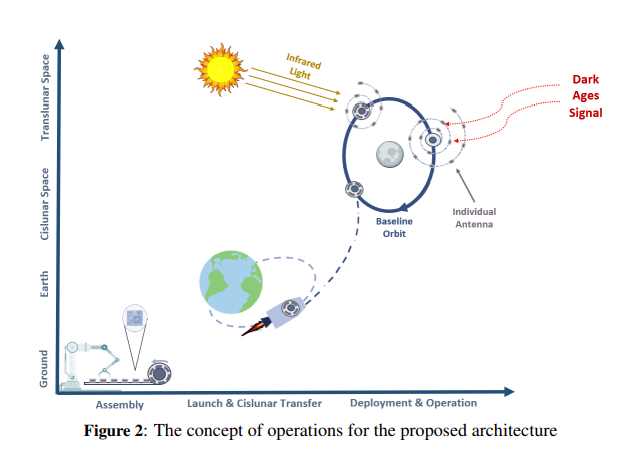Even some fields that seem fully settled will occasionally have breakthrough ideas that have reverberated impacts on the rest of the fields of science and technology. Mechanics is one of those relatively settled fields – it is primarily understood at the macroscopic level, and relatively few new breakthroughs have occurred in it recently. Until a few years ago, when a group of Harvard engineers developed what they called a totimorphic structure, and a recent paper by researchers at ESA’s Advanced Concepts Team dives into detail about how they can be utilized to create megastructures, such as telescope mirrors and human habitats in space.
Continue reading “A New Reconfigurable Structure Could Be Used to Make Space Habitats”Using Smart Materials To Deploy A Dark Age Explorer
One of the most significant constraints on the size of objects placed into orbit is the size of the fairing used to put them there. Large telescopes must be stuffed into a relatively small fairing housing and deployed to their full size, sometimes using complicated processes. But even with those processes, there is still an upper limit to how giant a telescope can be. That might be changing soon, with the advent of smart materials – particularly on a project funded by NASA’s Institute for Advanced Concepts (NIAC) that would allow for a kilometer-scale radio telescope in space.
Continue reading “Using Smart Materials To Deploy A Dark Age Explorer”

